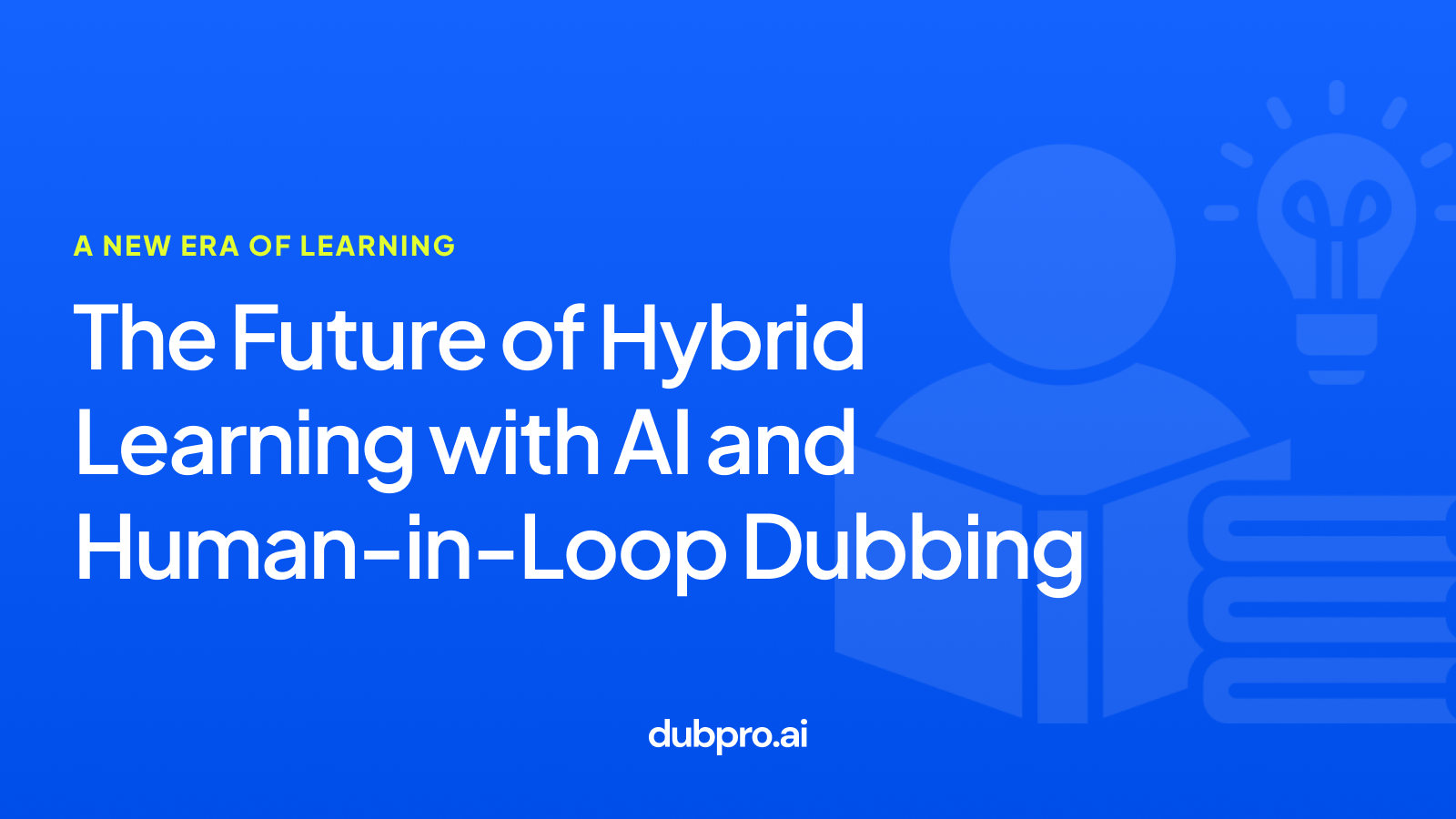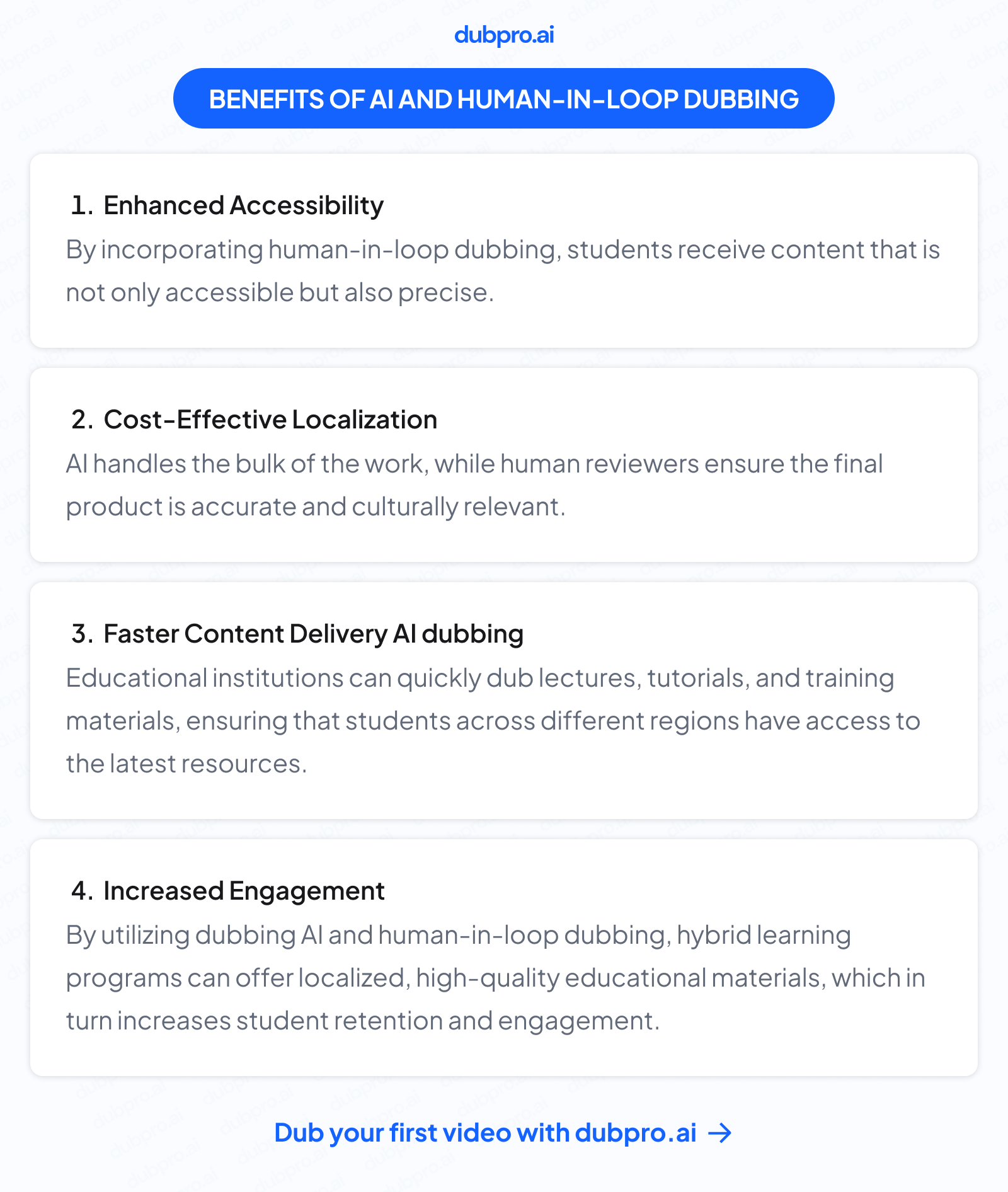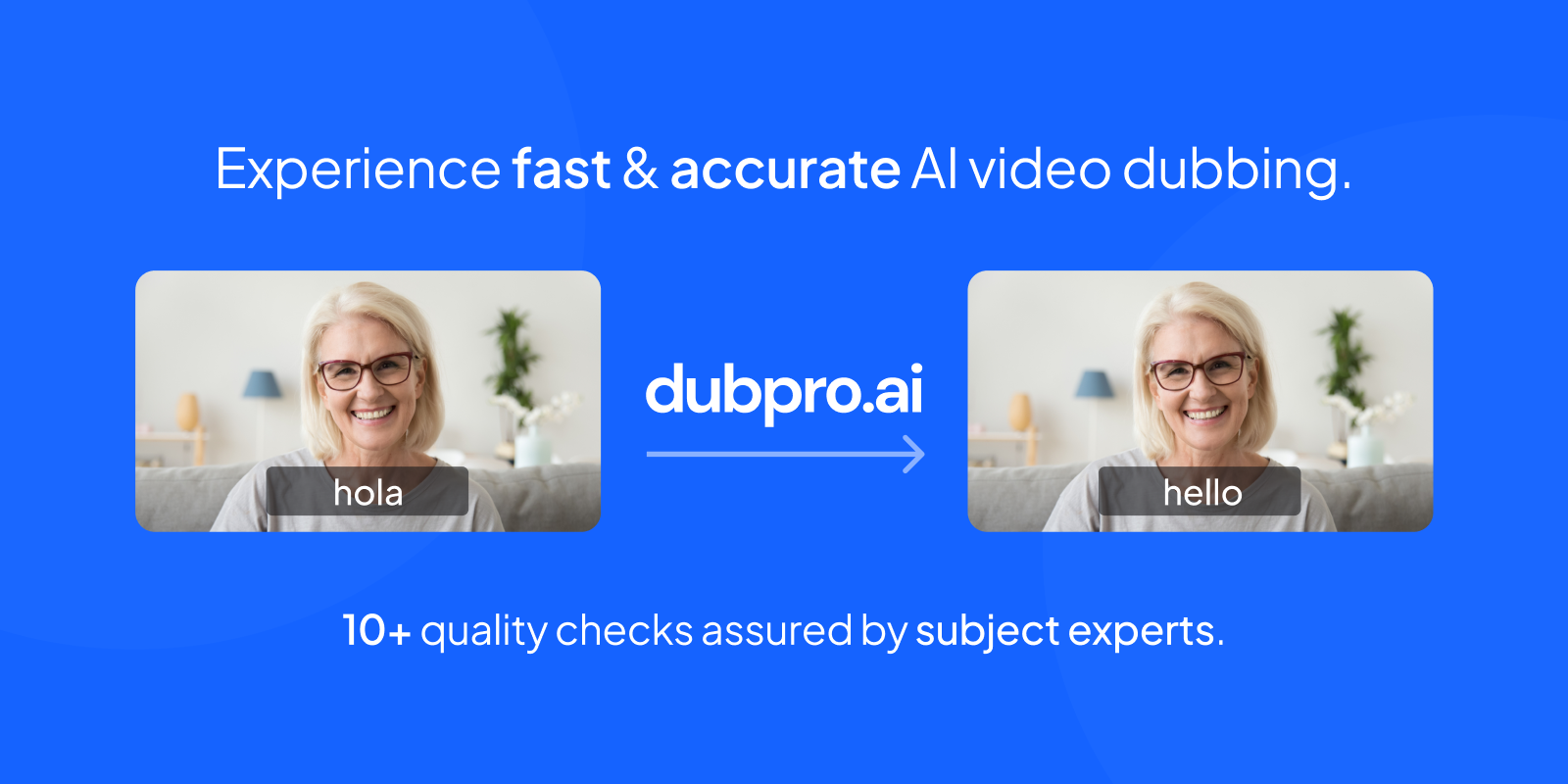The Future of Hybrid Learning with AI and Human-in-Loop Dubbing

Digital education has reshaped the way we learn. Hybrid learning, combining traditional in-person instruction with digital platforms, is the new frontier of education.
One key enabler of this transformation is the growing adoption of AI-powered tools, specifically AI dubbing, which is revolutionizing video content localization and accessibility for students worldwide.
With the integration of AI dubbing and human-in-loop dubbing, hybrid learning has never been more inclusive, efficient, and versatile.
What is Hybrid Learning?
Hybrid learning combines face-to-face classroom experiences with digital learning methods. In this model, learners engage with both in-person and online instruction, giving them the flexibility to access course materials remotely while still benefiting from direct interaction with teachers and peers.
However, one of the biggest challenges in hybrid learning is ensuring that educational content is accessible to a global audience, particularly for subjects that require nuanced explanations like Chartered Accountancy, UPSC, and other competitive exams. This is where video AI dubbing and localization come into play.
The Role of AI in Hybrid Learning
AI plays a transformative role in education by automating repetitive tasks, personalizing learning experiences, and enhancing engagement. One key area is the localization of educational videos through AI dubbing.
By translating and dubbing video content, AI enables educators to deliver lectures in multiple languages, breaking down language barriers for students from diverse linguistic backgrounds.
Take the example of complex subjects like CA and UPSC. These courses often involve intricate legal, financial, and governance terminology that must be delivered accurately.
AI dubbing, combined with human-in-loop processes, ensures that these terms are properly translated and contextualized, offering students a high-quality learning experience.
What is Human-in-Loop Dubbing?
While dubbing AI is highly efficient, it is not without its limitations. AI-generated translations, while fast, can sometimes miss the nuances or cultural sensitivities required for certain subjects. This is particularly critical in educational content where precision is key. Here, human-in-loop dubbing steps in to refine and verify the AI-generated output.
In a human-in-loop model, AI handles the bulk of the dubbing process, but human translators and subject matter experts review the results to ensure accuracy and cultural relevance.
For example, when translating lectures on subjects like Chartered Accountancy or UPSC, human experts can review the AI's work to ensure that complex terms are correctly localized without losing meaning.
Benefits of AI and Human-in-Loop Dubbing in Hybrid Learning
Enhanced Accessibility
With AI dubbing, educational videos can be dubbed into multiple languages in a fraction of the time it would take for manual translation. This is especially useful for courses like Chartered Accountancy and UPSC, where the demand for localized content is high. By incorporating human-in-loop dubbing, students receive content that is not only accessible but also precise.

Cost-Effective Localization
Traditionally, video dubbing and localization require significant time and resources. With video AI dubbing, institutions can reduce costs without sacrificing quality. AI handles the bulk of the work, while human reviewers ensure the final product is accurate and culturally relevant. This makes hybrid learning more affordable for institutions offering competitive exam courses like UPSC, CA, and other niche subjects.
Faster Content Delivery AI dubbing
AI Dubbing significantly speeds up the content creation and localization process. Educational institutions can quickly dub lectures, tutorials, and training materials, ensuring that students across different regions have access to the latest resources. This is especially crucial for fast-paced subjects like competitive exams, where students need up-to-date information.
Increased Engagement
Students are more likely to engage with content in their native language. By utilizing dubbing AI and human-in-loop dubbing, hybrid learning programs can offer localized, high-quality educational materials, which in turn increases student retention and engagement.
Using AI Dubbing: Chartered Accountancy, UPSC, and Competitive Exams
Let's explore how AI dubbing and human-in-loop dubbing are making an impact in specific courses.
Chartered Accountancy
Chartered Accountancy is a rigorous course that requires mastery of complex financial concepts, legal frameworks, and accounting standards. Many students who pursue this course come from non-English-speaking backgrounds, making it difficult for them to fully grasp the content when it is only available in English. With AI dubbing and human-in-loop processes, educational institutions can offer high-quality translations in various regional languages, ensuring that students understand every nuance of the material.
UPSC (Union Public Service Commission)
The UPSC exam is one of the most competitive exams in India, with a syllabus that spans history, politics, economics, and more. Many students, especially in rural areas, struggle with the English language barrier. Video AI dubbing allows educational platforms to translate UPSC content into local languages quickly and effectively. The human-in-loop aspect ensures that complex political and historical concepts are translated with precision, allowing students to learn in their preferred language without compromising the integrity of the material.
Other Competitive Exams
For competitive exams like the GRE, GMAT, or banking exams, where speed and comprehension are key, access to localized content can make a significant difference. With dubbing AI, educational platforms can produce and deliver exam preparation content in multiple languages at an unprecedented pace, ensuring that learners worldwide can benefit from the same high-quality instruction.
Conclusion
As hybrid learning continues to evolve, the integration of AI-powered technologies like video AI dubbing will play an increasingly critical role in enhancing educational accessibility. The collaboration between AI and human experts ensures that the quality of educational content remains high, even as localization becomes more widespread.
Looking ahead, we can expect further advancements in dubbing AI, such as real-time translations, even more accurate language models, and deeper integration with virtual classrooms.
Institutions offering courses like Chartered Accountancy, UPSC, and other competitive exams will benefit from these innovations, as they can provide localized, high-quality content at scale.
In summary, the future of hybrid learning lies in the seamless combination of AI's efficiency and human expertise. Human-in-loop dubbing ensures that AI-generated content is accurate, culturally sensitive, and deeply engaging for learners. This combination is paving the way for a more inclusive, accessible, and effective learning environment in the digital age.

Try your first professionally dubbed video with us!
Experience the future of video dubbing.
